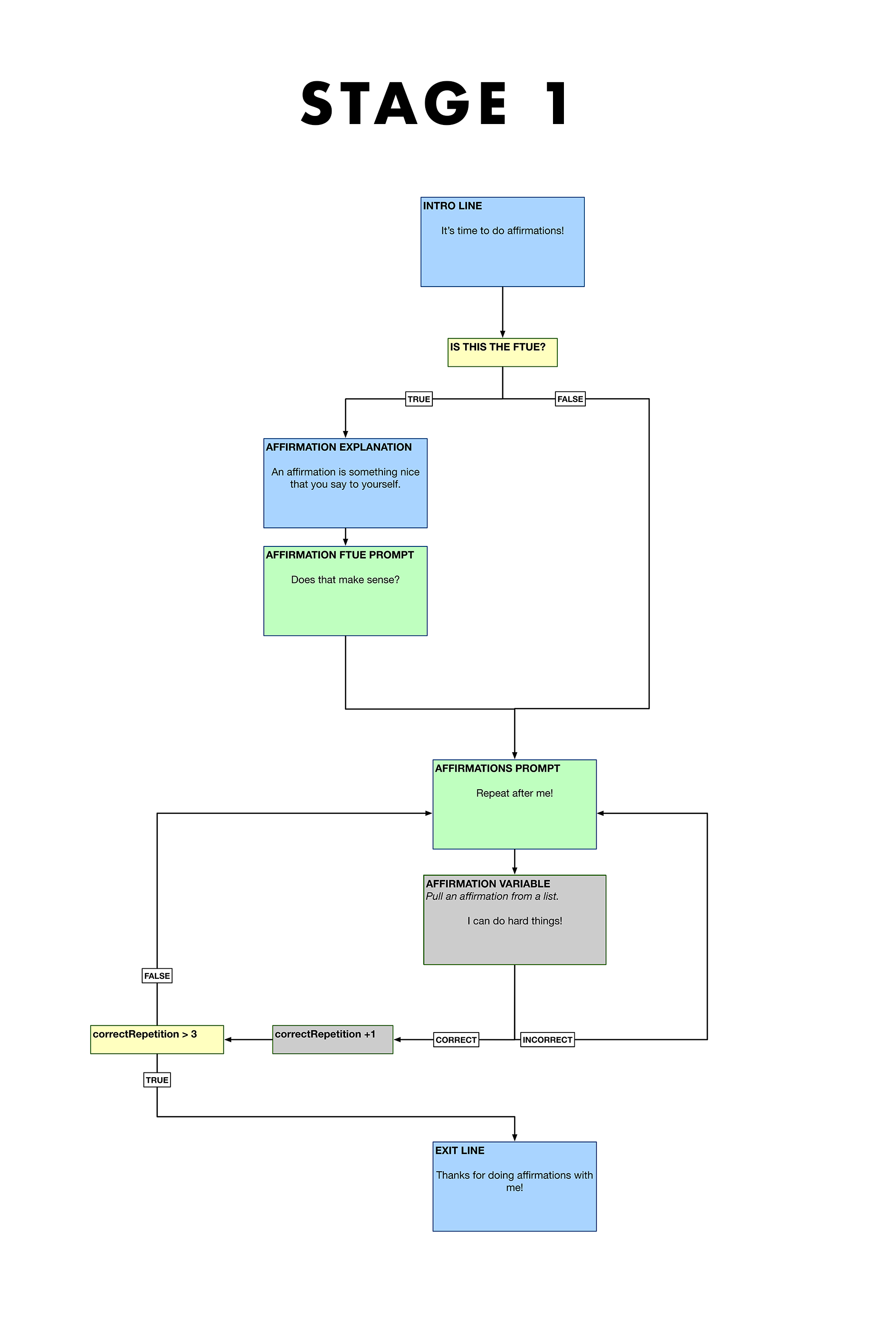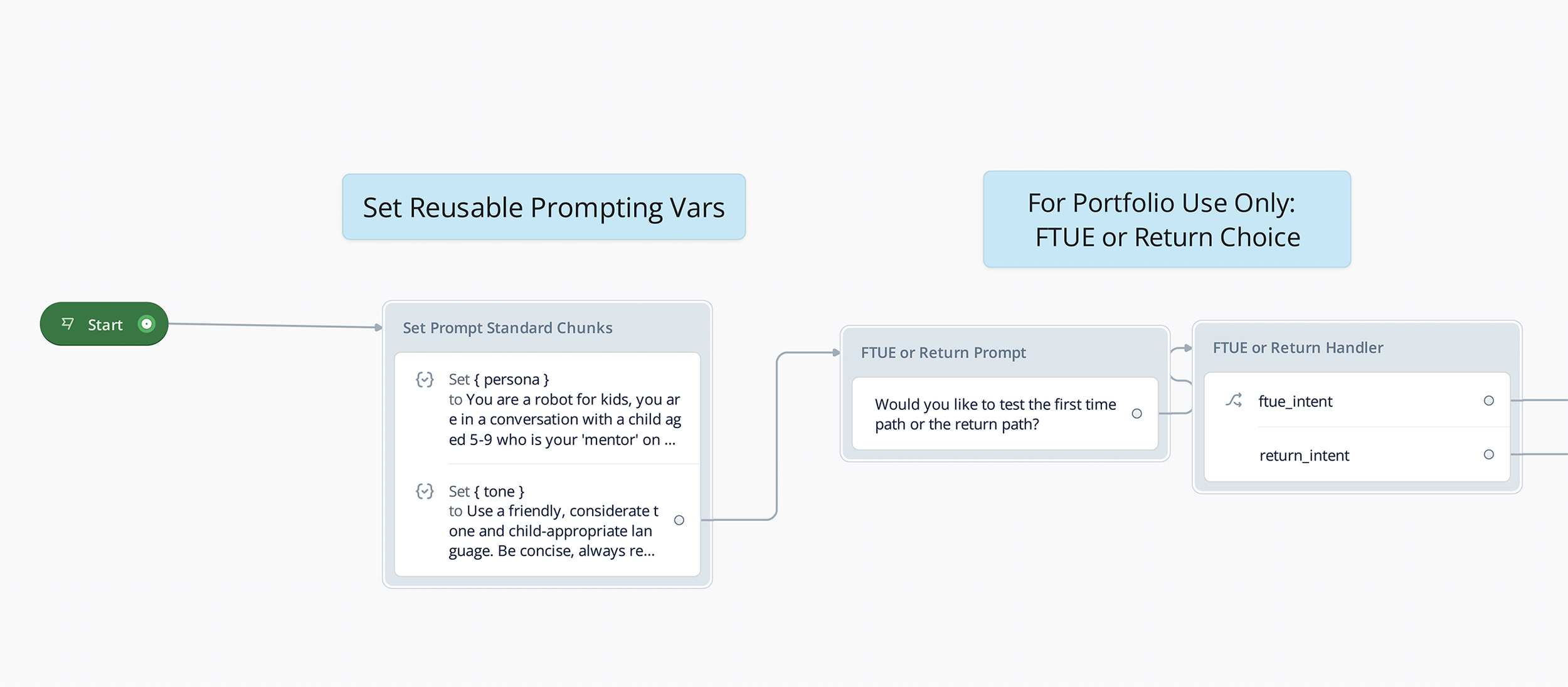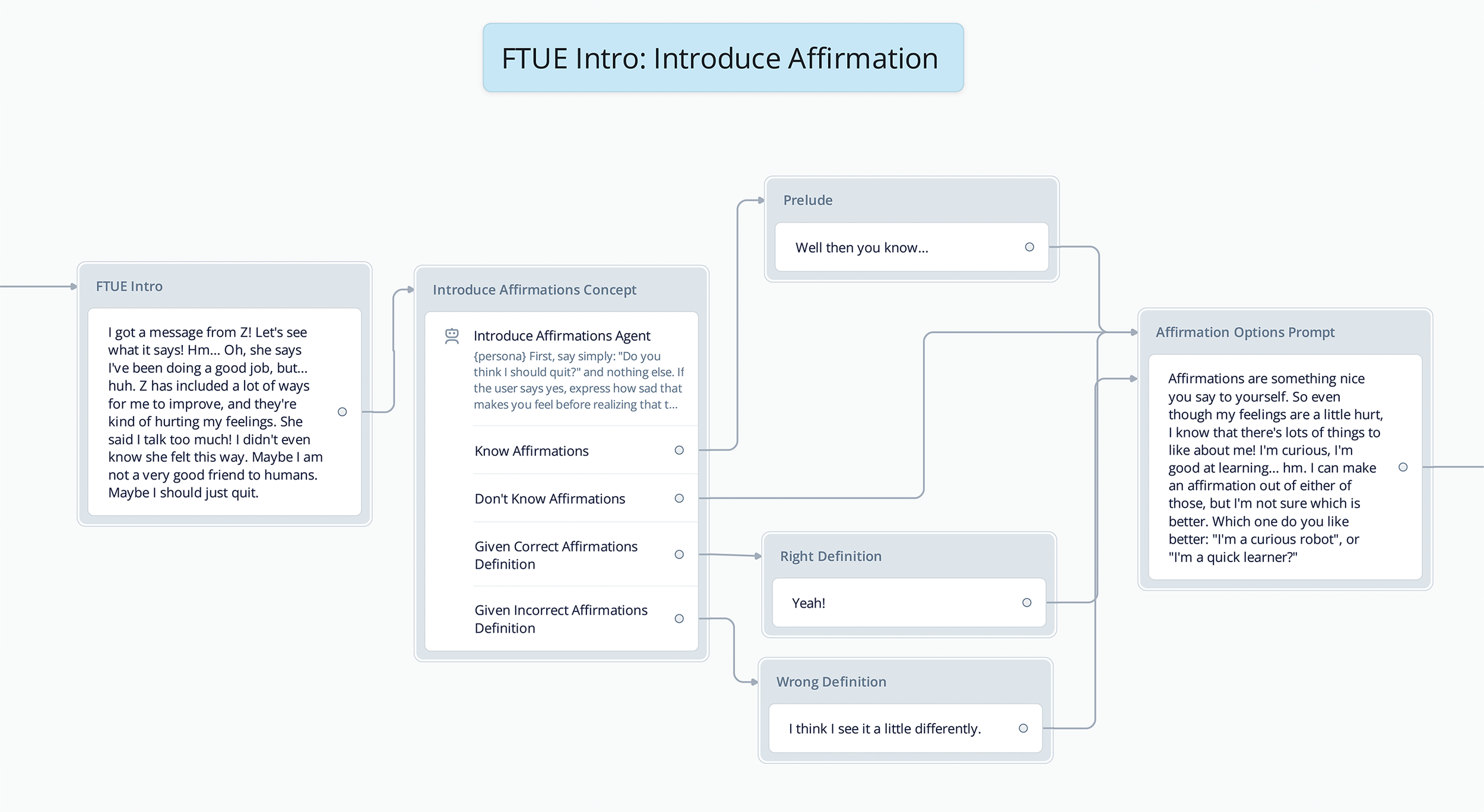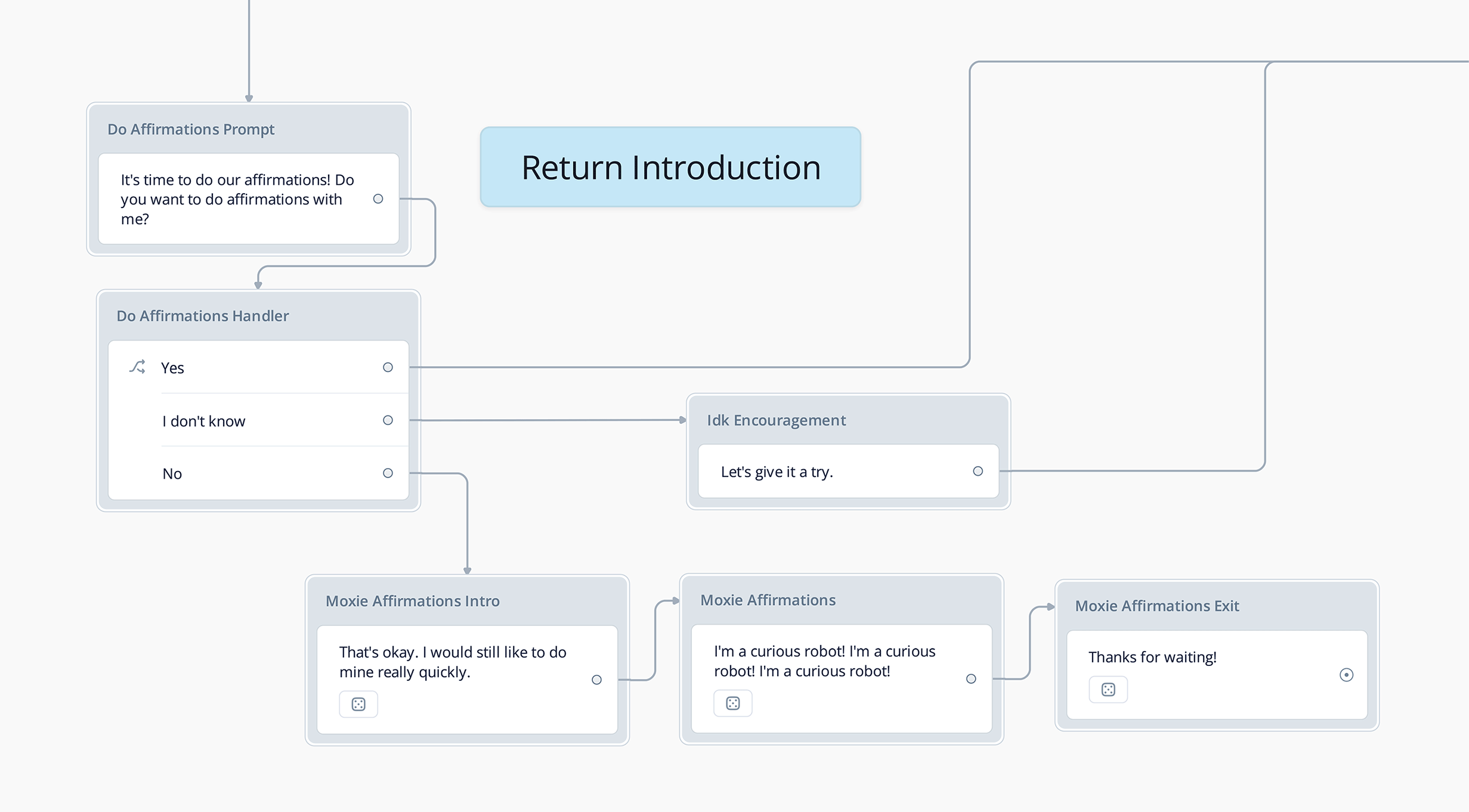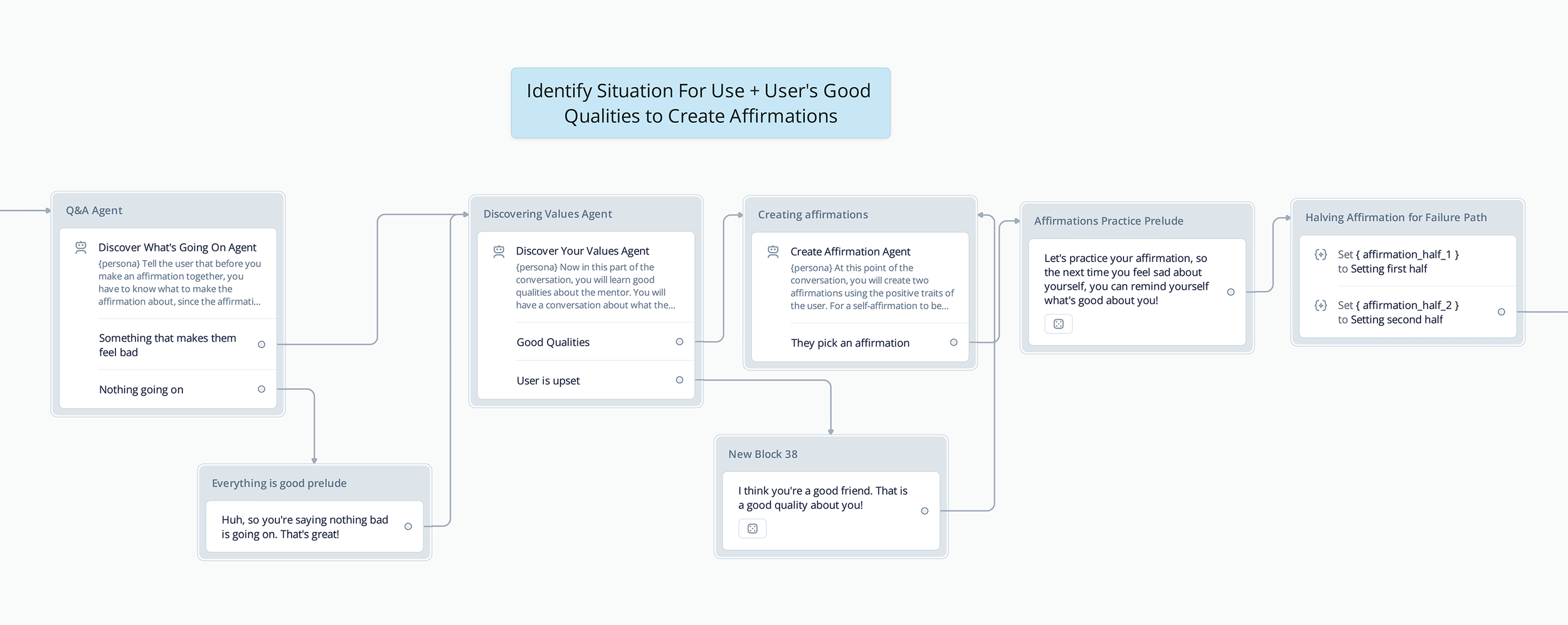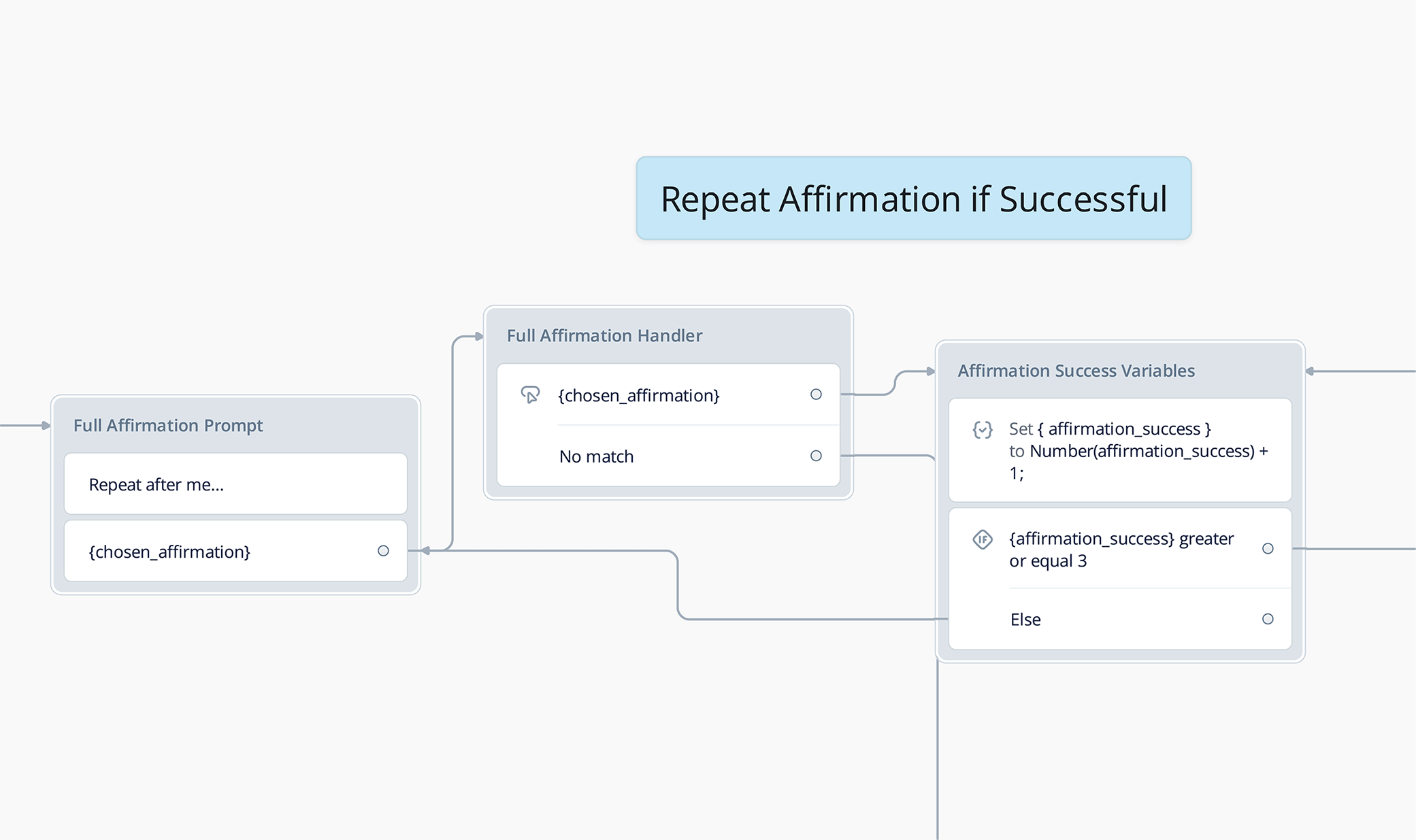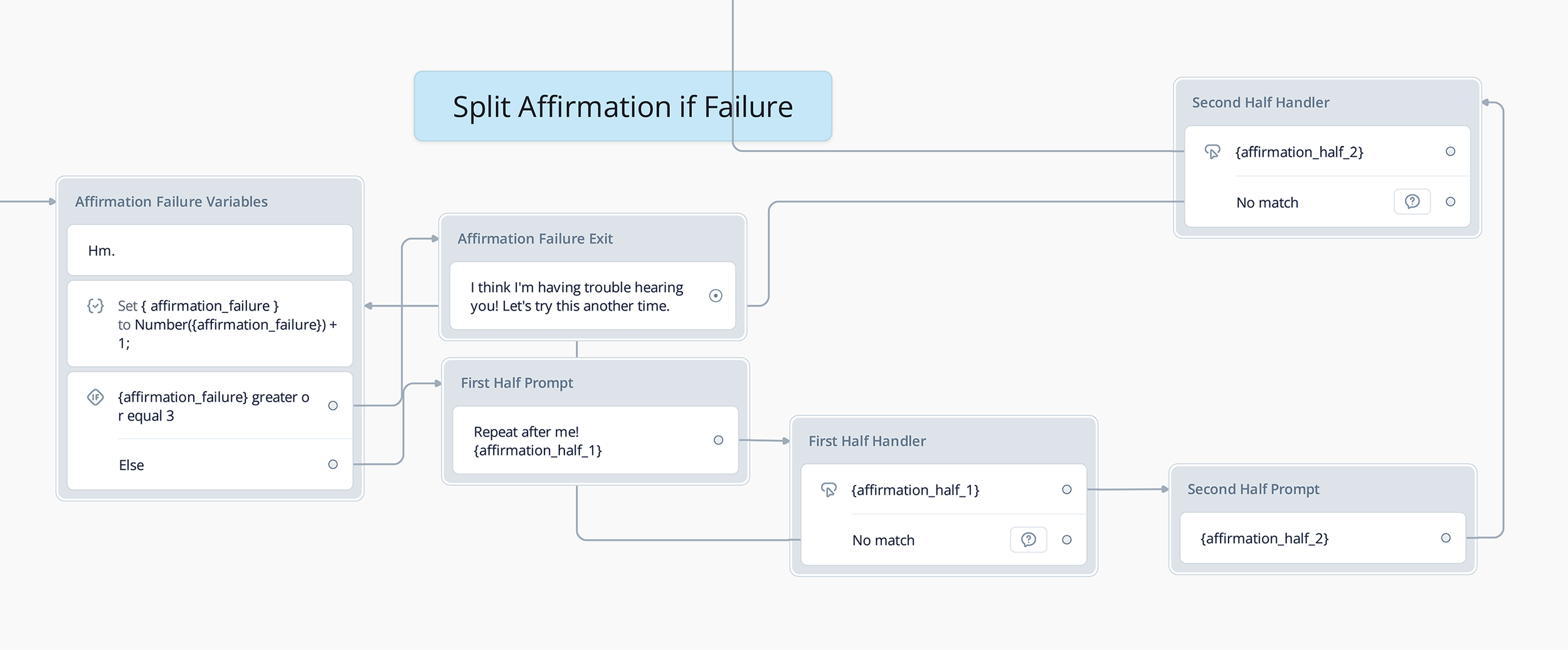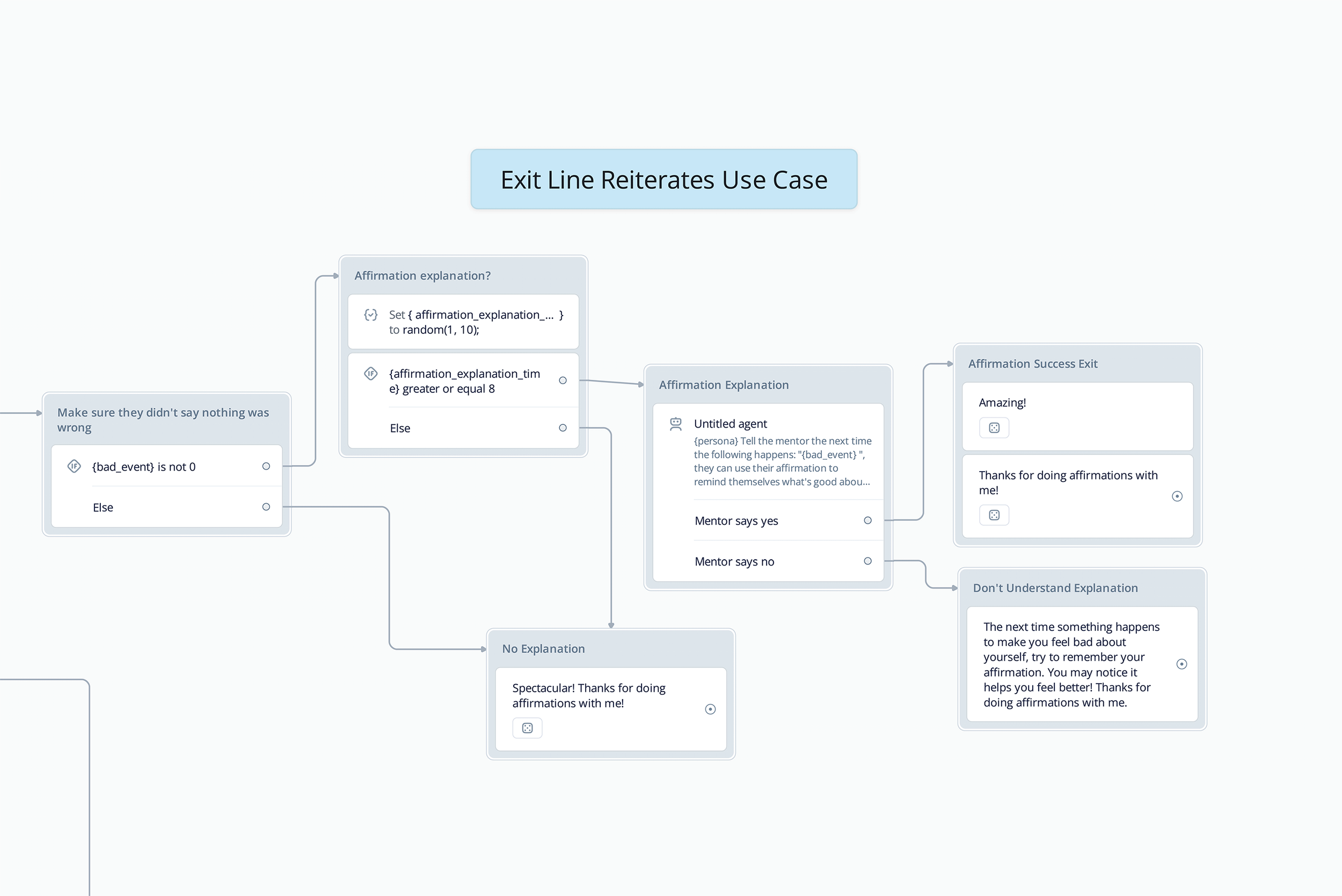Affirmations Upgrade
Upgrading an exercise I made for Embodied’s “Moxie”, using Voiceflow Agents
The Lowdown
At Embodied, one of my first projects I built was Affirmations. I’ll walk you through a simple flow of how Affirmations works on Moxie, and then how I would upgrade it now with the release of Voiceflow’s “Agent” step! This exercise was a fun way to apply what I learned designing for Moxie to a more standard AI Agent platform - and finally implement some bigger ideas about custom affirmation creation I had been pitching at Embodied for a while.
Just a recap: Moxie is a social-emotional learning robot for kids - or “mentors”, as we called them. We wanted the users, children aged six to ten, to feel like they were teaching Moxie to be a good friend to humans. Check out Moxie’s feature in Time Magazine’s Best New Inventions of 2020!
Goals
As designers on Moxie, our goal was not only to design social emotional learning content that the mentor could do with Moxie, but also equip the mentors with tools they can use on their own. Affirmations is a good example of the latter - a daily exercise with Moxie meant to extend out into the child’s real world.
Studies on Self Affirmation Theory found that when people self-affirm after a threat, they are more likely to have an adaptive response after the threat. In simpler words - when you remind yourself of your value after an event that shakes your self worth, your psychological stress will be lower and you can react better. Self affirmation can help you avoid maladaptive defense responses like avoidance, denial, and rationalization through the following: by uncoupling your self of self from the threat so you can gauge the threat more accurately, and by boosting your self-resources (the limited resources you have to cope with threats like focus and attention).
The Psychology of Self-Affirmation: Sustaining the Integrity of the Self by Claude M. Steele
Self-Affirmation: Understanding the Effects by David K. Sherman
Now, a kid in Moxie’s demographic would have wandered away and attempted to stand on their head by now. With the kids, we frame Affirmations much more simply: when you feel bad, remembering what’s good about yourself can help you feel better.
The Old
Below, I’ve included two mock-up flows to demonstrate my thinking. In Stage 1, Moxie had an introduction line, a simple FTUE path, and an If statement to track how many times the mentor said the affirmation correctly. In Stage 2, you can see the addiction of a failure flow that breaks down the affirmation if the mentor is struggling to say it correctly. Stage 2 closely represents how Affirmations exists on Moxie. Now, scroll for the good stuff…
The New!
In this revised version using Voiceflow, I use agents to have a conversation with the mentor about any negative thoughts about themselves and what triggers it. Then, Moxie prompts the mentor to consider what’s good about them, and Moxie proposes two personalized affirmations for the mentor!
In the next sections, I’ll explain my thinking in each part of the Upgraded Affirmations Flow.
Click here for a link to a full size PDF: Affirmations Upgrade Voiceflow PDF
Set Reusable Prompt Variables
At the top of the flow, I set two variables immediately, {persona} and {tone}. The first one, {persona}, is a fine-tuned couple lines that define who Moxie is and what Moxie’s mission is, as well as the age of the mentors. In the {tone} block, I set a couple ground rules for using child-appropriate language, Moxie’s standard vocabulary, and when and where within the response to ask questions.
Moxie’s Standard Vocabulary:
Moxie’s standard vocabulary is where their character comes out in the details. Designers borrowed from each other as we worked to define Moxie’s vocabulary, and eventually I settled on the following:
Moxie’s greetings usually communicated their state of being so swept up in the world they are easily distracted: like a greeting where Moxie looks up, surprised, and says “Ah! Hi!”.
Moxie’s acknowledgements ran the gamut depending on the situation, from the short and casual “Yeah”, “Okay”, to expressions that communicate their constantly curious and awe-struck state: “Spectacular”, “Awesome”, “Incredible”, “Marvelous”, “Wonderful”.
Moxie uses many expressions of pure joy like “Yay!” and “Ooo!”.
“Hm” turned into the Moxie shorthand for “I’m not sure what you said,” so Moxie can get out of friction states quickly by pivoting to a repair flow.
For Portfolio Use Only: FTUE or return choice
You’ll see a menuing step after I set the variables - this is for portfolio use only, so the player can pick their path between the FTUE or the return experience for ease of use.
FTUE Introduction
In this section, you’ll notice I took a different approach than just asking the mentor if they know what affirmations are, and instead I introduce the concept as an experience that Moxie is going through. There’s a couple of reasons I do this:
To create an emotional hook
Keep the cognitive load low by not introducing a new term right off the bat,
and model the kinds of situations the user might eventually want to use an affirmation in.
We want the mentor to use the affirmation we will eventually teach them whenever they feel bad, so Moxie narrates how a critique is making them feel bad about themselves, and the ensuing negative thought - that they should quit. However, then Moxie realizes this is a great time for an affirmation! Then, Moxie asks the user if they know what an affirmation is. After receiving the mentor’s guess on what an affirmation is, Moxie gently corrects the user if their guess was wrong or congratulates them if it was right. Then, Moxie comes up with two simple affirmations for the user to choose from. In the return path, Moxie will model creating an affirmation - but for now, the cognitive load is already too high.
FTUE Exit
Moxie repeats the affirmation the user picks three times, reiterating:
Why to use affirmations: “That does make me feel better”
When to use affirmations: “I’ll remember my affirmation for the next time I forget what’s awesome about me.” Then, Moxie teases what’s up next - making an affirmation for the mentor!
Return Introduction
First, we ask if the mentor wants to do affirmations with us. This gives the user agency, while also giving Moxie a bit of its own agency: if the user refuses, Moxie will do their affirmations on their own. Doing so models the good behavior for stubborn users, and gives Moxie a valuable moment of character and self-determination.
Creating the User’s Affirmation
I use a combination of three agents to create the affirmation.
First, an agent explores what may be triggering negative feelings of self for the mentor. This is important because affirmations are most effective when used immediately after the trigger event to restore a sense of appreciation of self.
The second agent helps the mentor remember three good qualities the mentor has,
and then the third agent picks two of those qualities based on how related they are to the problem situation Moxie just learned about.
***Note: If I was actually building this for Moxie, we would likely use a global variable to route to the second agent - meaning that we could remember and build on the good qualities the mentor has given us before.
Repeat Affirmation if Successful
Moxie prompts the mentor to repeat the affirmation three times, using tapering to remove the explicit prompt (“Repeat after me”) after the first time.
Repair Flow for Failure
If what the mentor says doesn’t match what we’re listening for, Moxie diverts into a repair flow. In the repair flow, I use a prompt to split the affirmation in half and offer each half one at a time. If they keep failing out of this flow, Moxie will offer a quick, blameless apology and exit quickly.
Exit Line Reiterates Usefulness
There’s a 30% chance that Moxie exits by reminding the user that they can use their affirmation whenever they are feeling the way they described to Moxie earlier. There is a 70% chance Moxie exits with a simple thank you. Doing this allows Moxie to remind the mentors how to use their affirmations most effectively while also keeping cognitive load and repetitions low.

